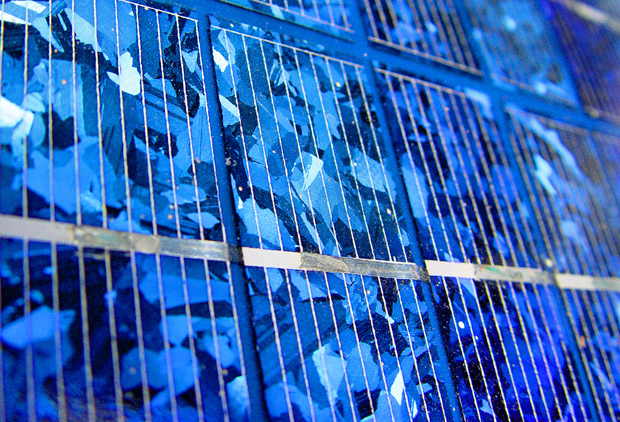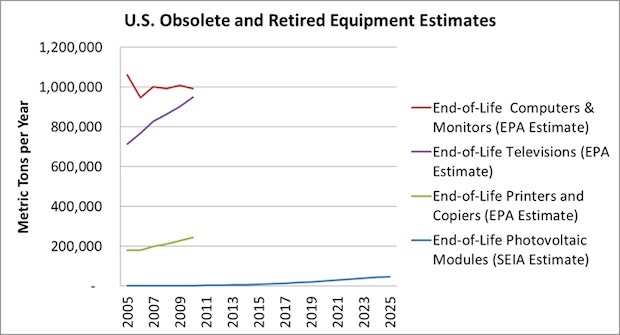
We had a feeling that BrightSource Energy was destined for big things when Google first announced it was investing $10 million in the solar thermal startup in 2008. After all, Google only invests in impressive (TechnoServe, eSolar) and profoundly weird (wind power from kites, anyone?) companies. So it's not all that surprising to learn that BrightSource just finalized $1.6 billion in loans from the U.S Department of Energy as well as a $168 million investment from Google--all to build the world's largest solar project.
When completed in 2013, the Mojave Desert-based Ivanpah Solar Electric Generating System will send approximately 2,600 megawatts of power to the grid, doubling the amount of solar thermal power produced in the U.S and generating enough electricity to power 140,000 California homes when operating at full capacity.
This won't be a set of photovoltaic panels like you might see on you're neighbor's roof; the solar themal system consists of thousands of mirrors that reflect sunlight onto a water-filled boiler, creating steam that spins a turbine and generates electricity. It's cheaper than conventional solar panels, but just as reliable. The Ivanpah system goes one step further by converting steam back into water, allowing it to use 95% less water than other solar thermal systems.
It's the kind of creative stuff that Google laps up like catnip. "We’re excited to be making our largest clean energy investment to date. With this investment, we’re helping to deploy the first commercial plant of a potentially transformative solar technology able to deliver clean energy at scale," said Rick Needham, Director of Green Business Operations at Google, in a statement. "Ivanpah will be the largest solar power tower project in the world, able to produce clean electricity at the highest efficiency of any solar thermal plant. We hope it can serve as a proof point and spur further investment in this exciting technology."
This isn't just a donation. As good-hearted as Google makes itself out to be, when it makes an investment, it wants to make money on the other end. BrightSource already has a deal in place to sell the energy created at Ivanpah to PG&E and Southern California Edison. Every indication is that by 2013, the solar industry will be booming, and Google will be making a pretty penny on those clean watts. Remember that Google already has an energy company. This is just another item in that portfolio.
But wait! There is one thing that could stop them: turtles. BrightSource has already been forced to scale back the project due to concerns about the safety of endangered desert tortoises in the area (the project will still displace up to 140 of the slow-movers, who refuse to get out of the way of progress). It's a problem that will continue to bug the slew of solar companies working on projects in the Mojave--and probably the only thing that may make Google regret its investment.
[Image: Flickr user Clearly Ambiguous]
After we wrote about how many solar panel makers fared badly on The Silicon Valley Toxics Coalition's 2011 Solar Scorecard, the Solar Energy Industries Association (SEIA) nearly fell over itself to respond, telling us that the solar industry is cleaning up its act--and fast.
The scorecard--which rates solar providers on the cleanliness of their supply chains (i.e. recycling and use of toxic materials--received responses from just 46% of the photovoltaic industry market, perhaps in part because there is no green supply-chain standard for the industry, and companies are reluctant to expose their unregulated practices.
Just wait till next year, begs the SEIA. The industry association is rolling out a solar code of conduct later this year for companies that will have certain standards for solar module collection and recycling, extended producer responsibility (manufacturers of these materials have to implement systems for takeback and recycling), supply chain management (making sure business partners are handling materials appropriately from manufacture through recycling), and strict worker and fire-safety codes. So, the 2012 scorecard should have a much higher response rate and higher scores.
Even now, the SEIA says that the industry isn't as bad as the Solar Scorecard implies. Many companies--especially startups--still don't have takeback or recycling programs, but this won't be a problem for at least a decade since most solar panels last up to 25 years. That sounds eerily familiar to what an oil company might say about switching to renewables (we still have plenty of oil for now!), but it has the added benefit of being true. Check out the chart below for proof:

So, they have a few years to get this stuff together. And as for those complaints in the scorecard about companies using toxic lead and cadmium in their supply chains? It's a problem, but one that will hopefully be cleaned up by the solar code of conduct. "Right now the volume is so low compared to other electronic materials, but yes, it's a concern because this industry is about solving environmental problems, not creating new ones," admits Monique Hanis, the SEIA's communications director, stating a hugely obvious fact. Saying that solar panel pollution isn't a problem because there aren't that many solar panels doesn't shine a flattering light on the ambitions of the industry.
So the SEIA is aware that there is a problem, and it has plans to fix it before everyone starts tossing their toxic solar panels into landfills. There's little to complain about here--besides the existential problem that solar panels could possibly be bad for the environment. Provided, of course, that the solar code of conduct is up to snuff--we all know industries tend to be less than-tringent at regulating themselves.

Δεν υπάρχουν σχόλια:
Δημοσίευση σχολίου